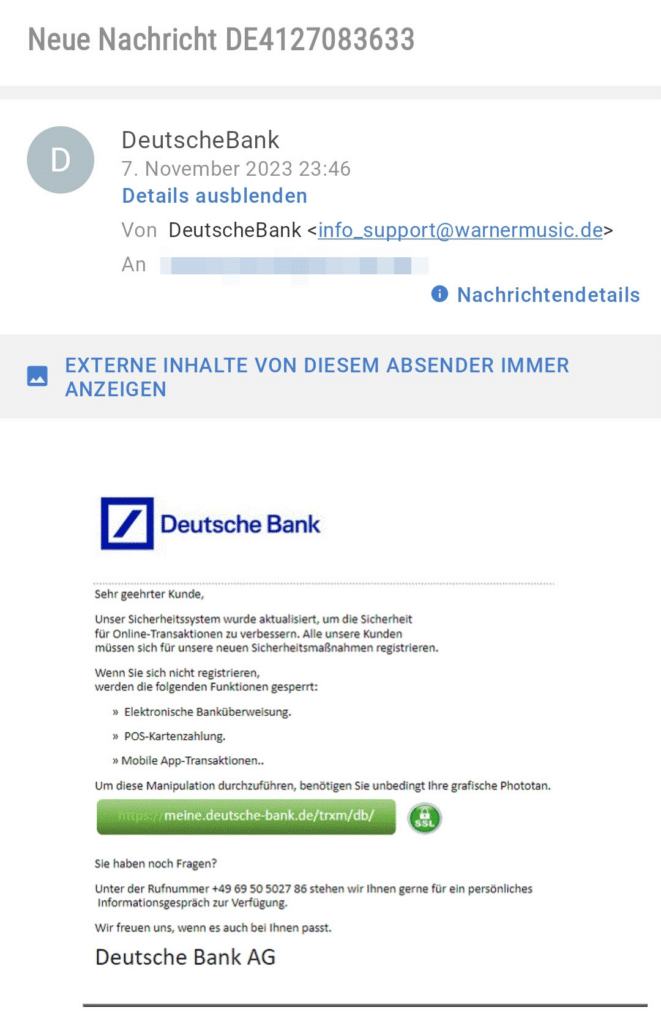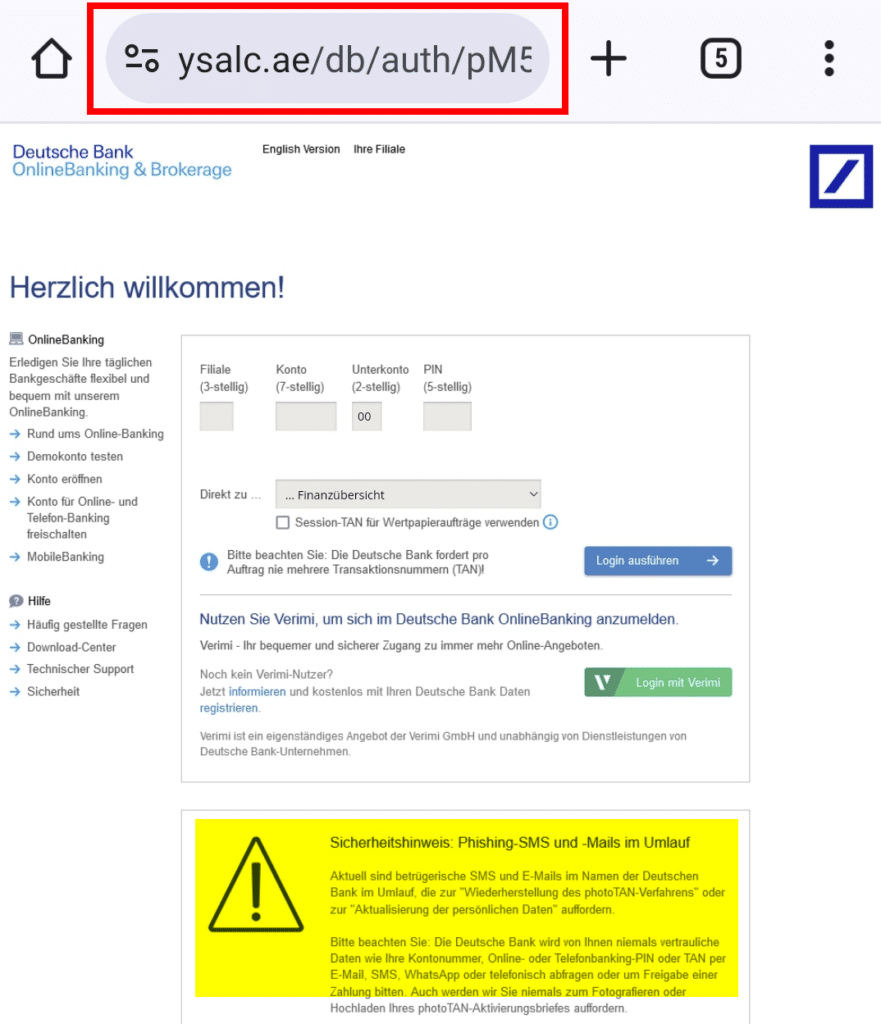These fake emails, which supposedly come from “Deutsche Bank”, are not only designed to be deceptively authentic, but also contain links to fake websites that give the appearance of being legitimate.
This article highlights the dangerous aspects of these phishing emails and provides important tips on how to protect yourself from such scam attempts.
The mask of fraud: deceptively genuine emails
The recently discovered fraudulent emails cleverly disguise themselves as messages from Deutsche Bank. At first glance they appear authentic, with the sender “DeutscheBank”. However, the first sign of fraud is the sender email address - an address that does not belong to Deutsche Bank. This discrepancy is a clear warning signal.
The Trap: Fake Security Alert
The content of the emails claims that the bank's security system has been updated and customers must register for new security measures. Anyone who fails to comply with this request risks having banking services such as electronic transfers and mobile transactions blocked. An attached link leads to a fake Deutsche Bank website.

False Security: Deceptively Real Websites
Anyone who clicks on the link will land on a website that looks deceptively similar to the official Deutsche Bank website. The user is asked here to enter their account details.
Content for the fake is likely to have been copied from the original, which makes the fake seem like a legitimate site. Only a closer look at the URL reveals that it is a fake site.
Ironically, the fake site even includes a warning about phishing emails, which can add to the false sense of security.

Protective measures and responses
Extreme caution should be exercised when receiving such emails. It is important not to enter any personal information and to mark the email as spam immediately.
If you have already clicked on the link and entered data:
- Contact your bank.
- Block your account and gfs. also their bank cards.
- Inform the police and file a report.
These measures can help ensure the protection of your account and your money and stop fraudsters.
Conclusion: Stay cautious and act
These phishing emails are a serious attempt to steal sensitive financial information. It is important to remain cautious and critically examine suspicious emails. If in doubt, you should always contact your bank directly.
To stay up to date and receive further valuable information, subscribe to the Mimikama newsletter and discover our media educational offer to protect yourself and your loved ones from fraud on the Internet.
Notes:
1) This content reflects the current state of affairs at the time of publication. The reproduction of individual images, screenshots, embeds or video sequences serves to discuss the topic. 2) Individual contributions were created through the use of machine assistance and were carefully checked by the Mimikama editorial team before publication. ( Reason )

